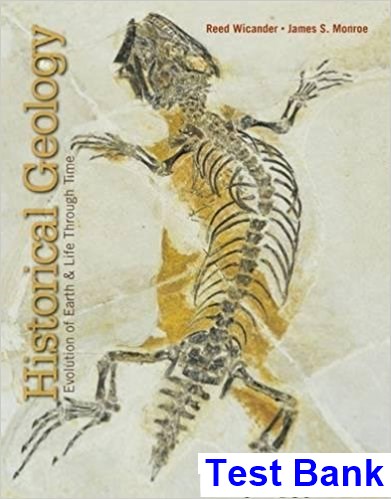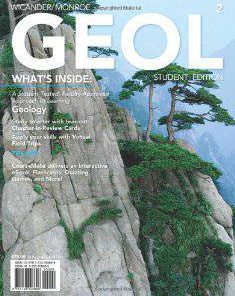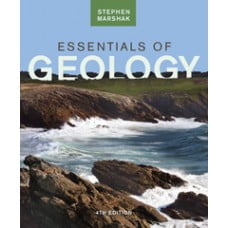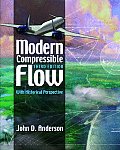Historical Geology 8th Edition Wicander Test Bank
$55.00 Original price was: $55.00.$29.99Current price is: $29.99.
Historical Geology 8th Edition Wicander Test Bank
Category: Test Bank
This is completed downloadable of Historical Geology 8th Edition Wicander Test Bank

Product Details:
eText ISBN: 9781305480766, 1305480767
Author: Reed Wicander; James S. Monroe
Wicander and Monroe’s HISTORICAL GEOLOGY offers comprehensive content for the historical geology course and provides you with an understanding of the principles of historical geology and how these principles are applied in unraveling Earth’s history. You will learn and understand the underlying causes of why things happened and the way they did, and how all of Earth’s systems and subsystems are interrelated. You will understand the relevancy of Earth’s history as part of a dynamic and complex integrated system, not as a series of isolated and unrelated events.
Table of Content:
- Ch 1: The Dynamic and Evolving Earth
- Ch 1: Outline
- Ch 1: Chapter Objectives
- Ch 1: Introduction
- What Is Geology?
- Historical Geology and the Formulation of Theories
- Origin of the Universe and Solar System and Earth’s Place in the Cosmos
- Why Earth Is a Dynamic and Evolving Planet
- Organic Evolution and the History of Life
- Geologic Time and Uniformitarianism
- How Does the Study of Historical Geology Benefit Us?
- Ch 1: Summary
- Ch 1: Important Terms
- Ch 1: Review Questions
- Ch 2: Minerals and Rocks
- Ch 2: Outline
- Ch 2: Chapter Objectives
- Ch 2: Introduction
- Matter—What Is It?
- Minerals—The Building Blocks of Rocks
- Igneous Rocks
- Sedimentary Rocks
- Metamorphic Rocks
- Plate Tectonics and the Rock Cycle
- Economic Geology
- Ch 2: Summary
- Ch 2: Important Terms
- Ch 2: Review Questions
- Ch 3: Plate Tectonics: A Unifying Theory
- Ch 3: Outline
- Ch 3: Chapter Objectives
- Ch 3: Introduction
- Early Ideas About Continental Drift
- What Is the Evidence for Continental Drift?
- Earth’s Magnetic Field
- Magnetic Reversals and Seafloor Spreading
- Plate Tectonics: A Unifying Theory
- The Three Types of Plate Boundaries
- Hot Spots and Mantle Plumes
- How Are Plate Movement and Motion Determined?
- The Driving Mechanism of Plate Tectonics
- Plate Tectonics and Mountain Building
- Plate Tectonics and the Distribution of Life
- Plate Tectonics and the Distribution of Natural Resources
- Ch 3: Summary
- Ch 3: Important Terms
- Ch 3: Review Questions
- Ch 4: Geologic Time: Concepts and Principles
- Ch 4: Outline
- Ch 4: Chapter Objectives
- Ch 4: Introduction
- How Is Geologic Time Measured?
- Early Concepts of Geologic Time and Earth’s Age
- James Hutton and the Recognition of Geologic Time
- Relative Dating Methods
- Numerical Dating Methods
- Geologic Time and Climate Change
- Ch 4: Summary
- Ch 4: Important Terms
- Ch 4: Review Questions
- Ch 5: Rocks, Fossils, and Time: Making Sense of the Geologic Record
- Ch 5: Outline
- Ch 5: Chapter Objectives
- Ch 5: Introduction
- Stratigraphy
- Fossils and Fossilization
- The Relative Geologic Time Scale
- Stratigraphic Terminology
- Correlation
- Numerical Dates and the Relative Geologic Time Scale
- Ch 5: Summary
- Ch 5: Important Terms
- Ch 5: Review Questions
- Ch 6: Sedimentary Rocks: The Archives of Earth History
- Ch 6: Outline
- Ch 6: Chapter Objectives
- Ch 6: Introduction
- Sedimentary Rock Properties
- Depositional Environments
- Interpreting Depositional Environments
- Paleogeography
- Ch 6: Summary
- Ch 6: Important Terms
- Ch 6: Review Questions
- Ch 7: Evolution: The Theory and Its Supporting Evidence
- Ch 7: Outline
- Ch 7: Chapter Objectives
- Ch 7: Introduction
- Evolution: What Does It Mean?
- Mendel and the Birth of Genetics
- The Modern View of Evolution
- What Kinds of Evidence Support Evolutionary Theory?
- Fossils: What Do We Learn From Them?
- Ch 7: Summary
- Ch 7: Important Terms
- Ch 7: Review Questions
- Ch 8: Precambrian Earth and Life History: The Hadean and the Archean Eon
- Ch 8: Outline
- Ch 8: Chapter Objectives
- Ch 8: Introduction
- What Happened During the Hadean?
- Archean Earth History
- The Atmosphere and Hydrosphere
- Life—Its Origin and Early History
- Archean Mineral Resources
- Ch 8: Summary
- Ch 8: Important Terms
- Ch 8: Review Questions
- Ch 9: Precambrian Earth and Life History: The Proterozoic Eon
- Ch 9: Outline
- Ch 9: Chapter Objectives
- Ch 9: Introduction
- Proterozoic History of Laurentia
- Proterozoic Supercontinents
- Ancient Glaciers and Their Deposits
- The Evolving Atmosphere
- Proterozoic Life
- Proterozoic Mineral Resources
- Ch 9: Summary
- Ch 9: Important Terms
- Ch 9: Review Questions
- Ch 10: Early Paleozoic Earth History
- Ch 10: Outline
- Ch 10: Chapter Objectives
- Ch 10: Introduction
- Continental Architecture: Cratons and Mobile Belts
- Paleozoic Paleogeography
- Early Paleozoic Evolution of North America
- The Sauk Sequence
- The Tippecanoe Sequence
- The Appalachian Mobile Belt and the Taconic Orogeny
- Early Paleozoic Mineral Resources
- Ch 10: Summary
- Ch 10: Important Terms
- Ch 10: Review Questions
- Ch 11: Late Paleozoic Earth History
- Ch 11: Outline
- Ch 11: Chapter Objectives
- Ch 11: Introduction
- Late Paleozoic Paleogeography
- Late Paleozoic Evolution of North America
- The Kaskaskia Sequence
- The Absaroka Sequence
- History of the Late Paleozoic Mobile Belts
- What Role Did Microplates and Terranes Play in the Formation of Pangaea?
- Late Paleozoic Mineral Resources
- Ch 11: Summary
- Ch 11: Important Terms
- Ch 11: Review Questions
- Ch 12: Paleozoic Life History: Invertebrates
- Ch 12: Outline
- Ch 12: Chapter Objectives
- Ch 12: Introduction
- The Emergence of a Shelly Fauna
- The Present-Day Marine Ecosystem
- Paleozoic Invertebrate Marine Life
- Mass Extinctions
- Ch 12: Summary
- Ch 12: Important Terms
- Ch 12: Review Questions
- Ch 13: Paleozoic Life History: Vertebrates and Plants
- Ch 13: Outline
- Ch 13: Chapter Objectives
- Ch 13: Introduction
- Vertebrate Evolution
- Fish
- Amphibians—Vertebrates Invade the Land
- Evolution of the Reptiles—The Land Is Conquered
- Plant Evolution
- Ch 13: Summary
- Ch 13: Important Terms
- Ch 13: Review Questions
- Ch 14: Mesozoic Earth History
- Ch 14: Outline
- Ch 14: Chapter Objectives
- Ch 14: Introduction
- The Breakup of Pangaea
- Mesozoic History of North America
- Continental Interior
- Eastern Coastal Region
- Gulf Coastal Region
- Western Region
- What Role Did Accretion of Terranes Play in the Growth of Western North America?
- Mesozoic Mineral Resources
- Ch 14: Summary
- Ch 14: Important Terms
- Ch 14: Review Questions
- Ch 15: Life of the Mesozoic Era
- Ch 15: Outline
- Ch 15: Chapter Objectives
- Ch 15: Introduction
- Marine Invertebrates and Phytoplankton
- Aquatic and Semiaquatic Vertebrates
- Plants—Primary Producers on Land
- The Diversification of Reptiles
- The Origin and Evolution of Birds
- The Origin and Evolution of Mammals
- Mesozoic Climates and Paleobiogeography
- Mass Extinctions—A Crisis in Life History
- Ch 15: Summary
- Ch 15: Important Terms
- Ch 15: Review Questions
- Ch 16: Cenozoic Earth History: The Paleogene and Neogene Periods
- Ch 16: Outline
- Ch 16: Chapter Objectives
- Ch 16: Introduction
- Cenozoic Plate Tectonics—An Overview
- Cenozoic Orogenic Belts
- North American Cordillera
- The Continental Interior
- Cenozoic History of the Appalachian Mountains
- North America’s Southern and Eastern Continental Margins
- Paleogene and Neogene Mineral Resources
- Ch 16: Summary
- Ch 16: Important Terms
- Ch 16: Review Questions
- Ch 17: Cenozoic Earth History: The Quaternary Period
- Ch 17: Outline
- Ch 17: Chapter Objectives
- Ch 17: Introduction
- Pleistocene and Holocene Tectonism and Volcanism
- Pleistocene Stratigraphy
- Onset of the Ice Age
- Glaciation and Its Effects
- What Caused Pleistocene Glaciation?
- Glaciers Today
- Quaternary Mineral Resources
- Ch 17: Summary
- Ch 17: Important Terms
- Ch 17: Review Questions
- Ch 18: Life of the Cenozoic Era
- Ch 18: Outline
- Ch 18: Chapter Objectives
- Ch 18: Introduction
- Marine Invertebrates and Phytoplankton
- Cenozoic Vegetation and Climate
- Cenozoic Birds
- The Age of Mammals Begins
- Paleogene and Neogene Mammals
- Pleistocene Faunas
- Intercontinental Migrations
- Ch 18: Summary
- Ch 18: Important Terms
- Ch 18: Review Questions
- Ch 19: Primate and Human Evolution
- Ch 19: Outline
- Ch 19: Chapter Objectives
- Ch 19: Introduction
- What Are Primates?
- Prosimians
- Anthropoids
- Hominids and Hominins
- Ch 19: Summary
- Ch 19: Important Terms
- Ch 19: Review Questions
- Epilogue
- Appendix A: English-Metric Conversion Chart
- Appendix B: Classification of Organisms
- Appendix C: Mineral Identification
- Appendix D: A Refresher on Structural Geology
- Glossary
- Answers to Multiple-Choice Review Questions
- Index
People Also Search:
historical geology 8th edition wicander
historical geology 8th edition wicander test bank download pdf
historical geology 8th edition wicander download scribd
You may also like…
Sale!
Sale!
Sale!
Solution Manual
Sale!
Sale!
Sale!
Sale!
Sale!
Sale!
Solution Manual












